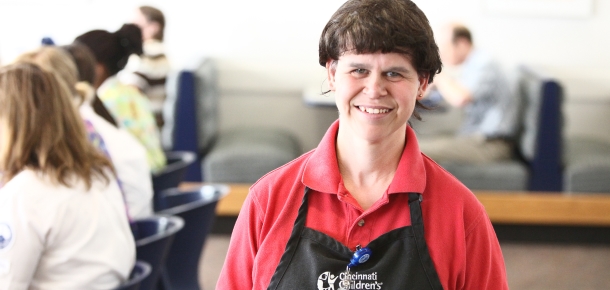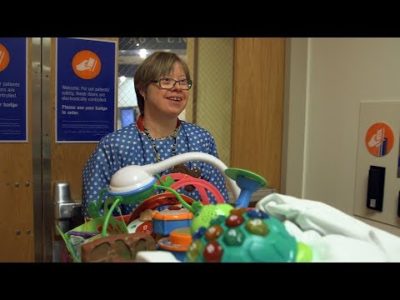The idea for Project SEARCH came about in 1996 when I was nursing director of the emergency department at Cincinnati Children’s Hospital Medical Center. An important part of that job involved hiring and managing personnel.
In that context, it occurred to me that, because individuals with intellectual and developmental disabilities made up a significant portion of our patient population, it made sense that we should also commit to hiring people in this group. However, when I tried to put this idea into effect, I found that the majority of these young people didn’t have the preparation they needed to succeed in the positions we had available. Nonetheless, I was confident that with the right training, people with developmental disabilities could be good candidates to fill many of the high-turnover, entry-level positions in my department.
I was aware that Cincinnati Children’s was home to numerous training and employment programs, but there were none specifically for people with developmental disabilities. Because I didn’t have the training or expertise to start such a program, I got in touch with Susie Rutkowski, a special education director who specialized in employment training for young people with disabilities.
It was a lucky accident that Susie was the expert I consulted. Not only did we have complementary areas of knowledge and compatible working styles, but we also clicked on a personal level. We became fast friends and formed a productive and lasting partnership. The result of our partnership was Project SEARCH – an employment training program at Cincinnati Children’s where young people with intellectual and developmental disabilities could learn relevant job skills.
The Project SEARCH model arose from a real business need rather than a strictly philanthropic motive, so it is very different from standard school-to-work programs. In the Project SEARCH High School Transition Program, young people with intellectual and developmental disabilities in their last year of high school eligibility spend an entire school year in a business learning work skills and getting hands-on training in a series of internships at various worksites. The goal for each student is competitive employment in real, career-launching jobs.
Our program started with the simple idea of training young people with disabilities in a business setting. Susie and I then refined and improved the program through a series of interactions in which we probed the education and rehabilitation systems and learned what was effective from a business perspective.
The resulting Project SEARCH model has been embraced with an astounding degree of enthusiasm that we never could have imagined in those early days. The program has grown from a single site at Cincinnati Children’s in 1996 to a continuously expanding international network of 230 sites today. In the 2010-11 school year – the first year of operation of our secure, web-based database – Project SEARCH sites reported an average rate of employment at 68 percent with starting salaries of $8.74 an hour and an average 23.4 hours/week.
I feel lucky to have been at Cincinnati Children’s, where my idea was nurtured and fully supported. The hospital was behind us as we put it into practice locally, and also as interest increased and inquiries started pouring in. The result is that every year – across the United States and in England, Scotland, Canada and Australia – roughly 3,000 young people with intellectual and developmental disabilities are leaving high school well-equipped with relevant, competitive job skills so that they can become contributing and engaged members of their communities.
Editor’s note: This post was originally featured in the opinion section of the Cincinnati Enquirer.



It is Healthcare Professionals like Erin Riehle that makes CCHMC the fantastic organization that it is and the envy of so many other organizations. She is one of the shining stars that make us great.